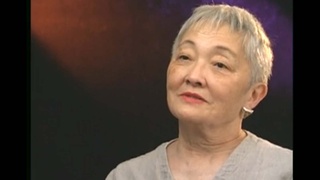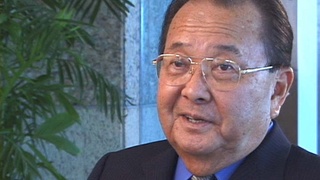Interviews
Unable to work when the war broke out
I applied at the Los Angeles County Hospital for an obstetrical residency. So I was there a while and of course they fired everyone of Japanese ancestry when the war broke out. So I couldn’t even…I barely started and had to leave. So I went to Seaside Memorial Hospital in Long Beach and I was there about a month and then they made everybody from Terminal Island and the beach area to go to camp at Santa Anita Race Track. So there I was in the horse stables, where you can still smell the manure and they gave us these straw mattresses, well we had to fill it with straw you know. And that’s where we were.
Date: March 31, 2005
Location: California, US
Interviewer: Gwenn M. Jensen
Contributed by: Watase Media Arts Center, Japanese American National Museum








